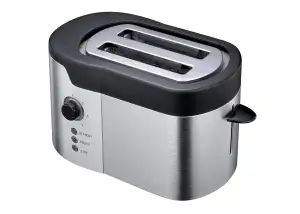Hydrangea Care: Essential Tips for Thriving Blooms in Your Home Garden

- Selecting the Right Location for Hydrangeas
- Planting Hydrangeas: Step-by-Step Guide
- Watering Hydrangeas: Dos and Don'ts
- Fertilizing Hydrangeas: Best Practices
- Pruning Hydrangeas: Tips for Healthy Growth
- Preventing and Treating Common Hydrangea Problems
- Winter Care for Hydrangeas: Protecting from Frost
Hydrangeas are beautiful flowering shrubs that can add a touch of elegance to any home garden. With their stunning blooms in various colors, hydrangeas are a popular choice for both experienced and novice gardeners. However, caring for hydrangeas requires some knowledge and attention to detail. In this article, we will explore essential tips for thriving blooms in your home garden. From selecting the right location to winter care, we will cover everything you need to know to keep your hydrangeas healthy and beautiful throughout the year. So let's dive in and discover the secrets of successful hydrangea care!
Selecting the Right Location for Hydrangeas
When it comes to selecting the right location for your hydrangeas, there are a few key factors to consider. First and foremost, hydrangeas thrive in well-drained soil with a pH level between 5.5 and 6.5. They also prefer areas with partial shade, as too much direct sunlight can cause their delicate blooms to wilt. Additionally, it's important to choose a location that offers protection from strong winds, as this can damage the plants and inhibit their growth. By carefully selecting the right spot for your hydrangeas, you'll be setting them up for success and ensuring they have the best chance of thriving in your home garden.
Planting Hydrangeas: Step-by-Step Guide
1. Choose a well-draining location with partial shade for your hydrangeas. Avoid areas with strong winds or direct sunlight.
2. Prepare the soil by loosening it and adding organic matter such as compost or peat moss. This will improve drainage and provide nutrients.
3. Dig a hole that is twice as wide and just as deep as the root ball of your hydrangea plant.
4. Gently remove the plant from its container, being careful not to damage the roots. If the roots are tightly bound, loosen them slightly before planting.
5. Place the plant in the hole, making sure that the top of the root ball is level with or slightly above the ground.
6. Backfill the hole with soil, firming it gently around the roots to eliminate air pockets.
7. Water thoroughly after planting to settle the soil and ensure good root-to-soil contact.
8. Mulch around the base of the plant to retain moisture and suppress weeds.
9. Provide regular watering during dry periods, especially during the first year after planting.
10. Monitor your hydrangeas closely for any signs of stress or disease, and take appropriate action if necessary.
By following these steps, you can ensure that your hydrangeas have a strong start and thrive in your garden for years to come.
Watering Hydrangeas: Dos and Don'ts
Proper watering is essential for the health and vitality of your hydrangeas. Here are some dos and don'ts to keep in mind:
Dos:
1. Water deeply: Give your hydrangeas a thorough watering, ensuring that the water reaches the roots.
2. Water consistently: Hydrangeas prefer moist soil, so water them regularly, especially during dry spells.
3. Use a soaker hose or drip irrigation: These methods deliver water directly to the roots, minimizing evaporation.
4. Mulch around the base: Apply a layer of organic mulch to retain moisture and regulate soil temperature.
Don'ts:
1. Overwater: Avoid soggy conditions as this can lead to root rot and other diseases.
2. Underwater: Don't let the soil dry out completely between waterings; it can stress the plant and affect blooming.
3. Water from above: Avoid wetting the foliage as it can promote fungal diseases.
4. Water during peak sun hours: Water early in the morning or late in the evening to prevent excessive evaporation.
By following these watering dos and don'ts, you'll ensure that your hydrangeas receive adequate hydration for healthy growth and abundant blooms.
Fertilizing Hydrangeas: Best Practices
Fertilizing hydrangeas is an essential part of their care to ensure healthy growth and vibrant blooms. The best time to fertilize is in early spring, just as new growth begins. Use a balanced, slow-release fertilizer specifically formulated for hydrangeas. Follow the package instructions for application rates based on the size of your plant. Avoid over-fertilizing, as this can lead to excessive foliage growth at the expense of flowers. Remember to water thoroughly after fertilizing to help nutrients reach the roots. Regular fertilization will keep your hydrangeas happy and blooming beautifully all season long.
Pruning Hydrangeas: Tips for Healthy Growth
Pruning hydrangeas is essential for maintaining healthy growth and promoting abundant blooms. Here are some tips to help you prune your hydrangeas effectively:
1. Timing: The best time to prune hydrangeas depends on the type of hydrangea you have. For most varieties, it's recommended to prune in late winter or early spring before new growth begins.
2. Remove dead wood: Start by removing any dead or damaged branches. This will improve the overall appearance of the plant and prevent disease from spreading.
3. Shape the plant: To maintain a compact and attractive shape, selectively prune back branches that are overgrown or straggly. Cut them back to just above a set of healthy buds.
4. Don't over-prune: Be cautious not to remove too much foliage, as this can reduce flowering potential. Only remove about one-third of the total growth each year.
5. Know your hydrangea type: Different types of hydrangeas require different pruning techniques. For example, mophead and lacecap varieties bloom on old wood, so they should be pruned immediately after flowering.
6. Remove weak stems: If you notice any weak or thin stems, it's best to remove them completely. This will redirect energy towards stronger branches and encourage healthier growth.
By following these pruning tips, you'll ensure that your hydrangeas stay healthy, vibrant, and full of beautiful blooms year after year.
Preventing and Treating Common Hydrangea Problems
Preventing and treating common hydrangea problems is essential for maintaining the health and beauty of your plants. One common issue is powdery mildew, a fungal disease that appears as a white powdery coating on the leaves. To prevent this, ensure good air circulation around the plants and avoid overhead watering. If powdery mildew does occur, treat it with a fungicide labeled for use on hydrangeas.
Another problem is chlorosis, which causes yellowing of the leaves due to iron deficiency. To prevent this, make sure your soil has adequate iron levels and maintain proper pH levels. If chlorosis occurs, treat it by applying an iron chelate fertilizer according to package instructions.
Root rot is another concern for hydrangeas, especially in poorly drained soil. To prevent this, ensure proper drainage by amending the soil with organic matter and avoiding overwatering. If root rot occurs, remove affected plants and improve drainage in that area.
Lastly, hydrangeas can be susceptible to pests such as aphids and spider mites. Regularly inspect your plants for signs of infestation and treat them with insecticidal soap or neem oil if necessary.
By being proactive in preventing these common problems and promptly addressing any issues that arise, you can enjoy healthy and thriving hydrangeas in your garden.
Winter Care for Hydrangeas: Protecting from Frost
As the temperatures drop and frost becomes a concern, it's important to take steps to protect your hydrangeas during the winter months. Here are some essential tips:
1. Mulch: Apply a thick layer of mulch around the base of your hydrangea plants. This will help insulate the roots and protect them from freezing temperatures.
2. Covering: On particularly cold nights, consider covering your hydrangeas with burlap or a frost cloth. This will provide an extra layer of protection against frost and wind damage.
3. Watering: During dry winter spells, make sure to water your hydrangeas adequately. Moist soil retains heat better than dry soil, helping to protect the roots from freezing.
4. Pruning: Avoid pruning your hydrangeas in late fall or early winter, as this can stimulate new growth that is more susceptible to frost damage. Instead, wait until spring to prune.
By following these simple winter care tips, you can ensure that your hydrangeas survive the cold months and come back strong and beautiful in the springtime.
In conclusion, by following these essential tips for hydrangea care, you can enjoy beautiful and healthy blooms in your home garden. Remember to select the right location, provide proper planting and watering techniques, fertilize appropriately, prune for healthy growth, and prevent common problems. Additionally, protect your hydrangeas from frost during winter. With these practices in place, you will be able to admire the stunning beauty of your thriving hydrangeas all season long.
Published: 11. 12. 2023
Category: Home



